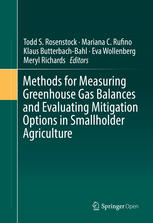

Most ebook files are in PDF format, so you can easily read them using various software such as Foxit Reader or directly on the Google Chrome browser.
Some ebook files are released by publishers in other formats such as .awz, .mobi, .epub, .fb2, etc. You may need to install specific software to read these formats on mobile/PC, such as Calibre.
Please read the tutorial at this link: https://ebookbell.com/faq
We offer FREE conversion to the popular formats you request; however, this may take some time. Therefore, right after payment, please email us, and we will try to provide the service as quickly as possible.
For some exceptional file formats or broken links (if any), please refrain from opening any disputes. Instead, email us first, and we will try to assist within a maximum of 6 hours.
EbookBell Team

5.0
20 reviewsThis book provides standards and guidelines for quantifying greenhouse gas emissions and removals in smallholder agricultural systems and comparing options for climate change mitigation based on emission reductions and livelihood trade-offs. Globally, agriculture is directly responsible for about 11% of annual greenhouse gas (GHG) emissions and induces an additional 17% through land use change, mostly in developing countries. Farms in the developing countries of sub-Saharan Africa and Asia are predominately managed by smallholders, with 80% of land holdings smaller than ten hectares. However, little to no information exists on greenhouse gas emissions and mitigation potentials in smallholder agriculture. Greenhouse gas measurements in agriculture are expensive, time consuming, and error prone, challenges only exacerbated by the heterogeneity of smallholder systems and landscapes. Concerns over methodological rigor, measurement costs, and the diversity of approaches, coupled with the demand for robust information suggest it is germane for the scientific community to establish standards of measurements for quantifying GHG emissions from smallholder agriculture. Standard guidelines for use by scientists, development organizations will help generate reliable data on emissions baselines and allow rigorous comparisons of mitigation options. The guidelines described in this book, developed by the CGIAR Research Program on Climate Change, Agriculture, and Food Security (CCAFS) and partners, are intended to inform anyone conducting field measurements of agricultural greenhouse gas sources and sinks, especially to develop IPCC Tier 2 emission factors or to compare mitigation options in smallholder systems.